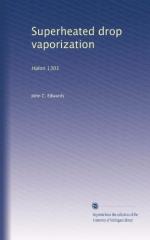|
This section contains 522 words (approx. 2 pages at 300 words per page) |

|
The term hydrochlorofluorocarbon (HCFC) refers to halogenated hydrocarbons that contain chlorine and/or fluorine in place of some hydrogen atoms in the molecule. They are chemical cousins of the chlorofluorocarbons (CFCs), but differ from them in that they have less chlorine. A special subgroup of the HCFCs is the hydrofluorocarbons (HFCs), which contain no chlorine at all.
A total of 53 HCFCs and HFCs are possible.
The HCFCs and HFCs have become commercially and environmentally important since the 1980s. Their growing significance has resulted from increasing concerns about the damage being done to stratospheric ozone by CFCs.
Significant production of the CFCs began in the late 1930s. At first, they were used almost exclusively as refrigerants. Gradually other applications—especially as propellants and blowing agents—were developed. By 1970, the production of CFCs was growing by more than 10% per year, with a worldwide production of well over 662 million lb (300 million...
|
This section contains 522 words (approx. 2 pages at 300 words per page) |

|


